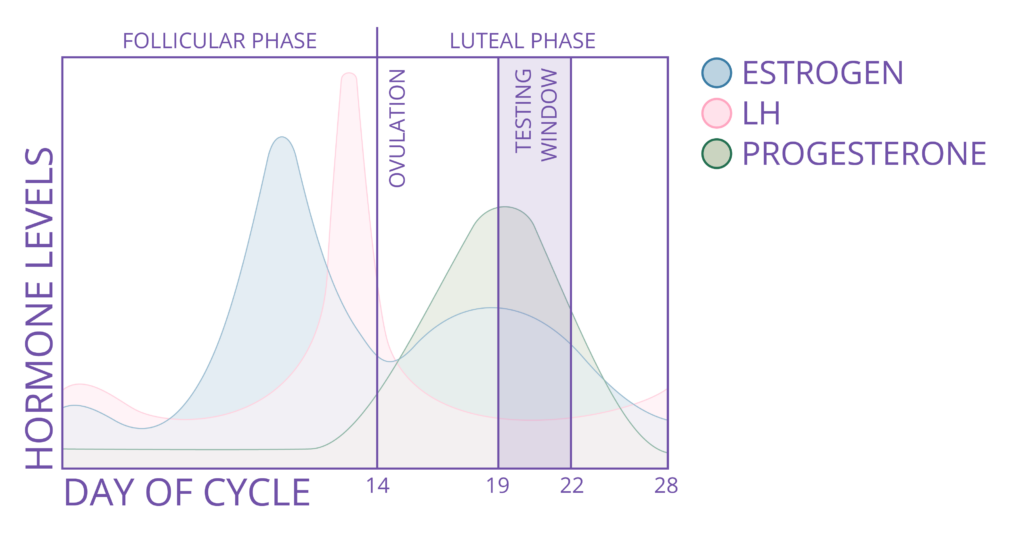Why we test during days 19-22 of a 28-day cycle
Elise Schroeder, ND
Why we test during days 19-22 of a 28-day cycle
by Elise Schroeder, ND
A common question both practitioners and patients have is, when should I test my hormones? This depends, of course, on whether someone is having regular cycles, how long their cycles are, and if they are near menopause.
Testing sex hormones in a woman with regular monthly cycles is best done during the mid-luteal peak. This is about 1 week (5-7days) after ovulation occurs. In a 28-day cycle, this would-be days 19, 20, 21 or 22.
This is the time in the menstrual cycle when progesterone should be at its peak for the month and when estrogen should be at the height of its luteal plateau. The image below, of the menstrual cycle, describes this beautifully.

On day one of the cycle (which is also the first day of the period), both estrogen and progesterone are very low. Estrogen then starts to rise until its ovulatory peak. The corpus luteum, which develops from the ovarian follicle (egg) that is released, produces progesterone. Progesterone, then starts to rise as that follicle gets ready for fertilization. If fertilization occurs, then it continues to produce progesterone which helps to maintain pregnancy (the name PRO – gesterone says it all: PRO- GEST(ation). If fertilization does not occur then the corpus luteum degenerates, progesterone and estrogen levels decline, and the cycle starts again.
If we test mid-luteal phase, when progesterone is at its peak, and estrogen is higher as well, we can glean a lot of information about that cycle. For instance:
- If progesterone levels are lower than expected, but estrogen is within range or low, then it can be assumed that ovulation did not occur.
- If progesterone levels are within range and estrogen is lower than expected, then we can assume that ovulation occurred. However, lower estrogen can affect endometrial quality and therefore affect implantation. Lower estrogen can also indicate poor egg quality.
- If estrogen is higher than expected and progesterone is within range, then ovulation occurred, but the individual is estrogen dominant which can contribute to symptoms such as migraines, PMS, breast tenderness and heavy bleeding.
- If both estrogen and progesterone are within range, then ovulation has occurred.
Testing on day 19-22 is the best choice to make if you want to get the most information from the DUTCH profile. However, if the individual testing has a shorter or longer cycle than 28 days, then adjust the timing of the test to their individual luteal peak. For example, if someone is having 25 day cycles, she will likely collect on days 16-19. If someone is having 35 day cycles, she will likely collect on days 26, 27, or 28.
For women who are peri-menopausal or women who are prone to skipping cycles, the best option is to consider using an ovulation predictor kit (OPK) bought at your local pharmacy or grocery store. Urinate on one device every morning until it is positive. This indicates ovulation is about to begin. Then count forward 5-7 days and collect the DUTCH test. Another option is to consider the DUTCH Cycle Mapping Test where the patient collects a hormone test strip almost every morning of her cycle, and the lab graphs out the rise and fall of her estrogen and progesterone throughout the month.
If you are still not certain on what days to collect your DUTCH test, please call the office at 503-687-2050 as we are happy to help you find the optimal test day.
Become a DUTCH Provider to gain access to hormone education, comprehensive patient reports, expert clinical support, and more.
TAGS
Menstrual Cycle
Estrogen and Progesterone
Premenopausal Women
Women's Health